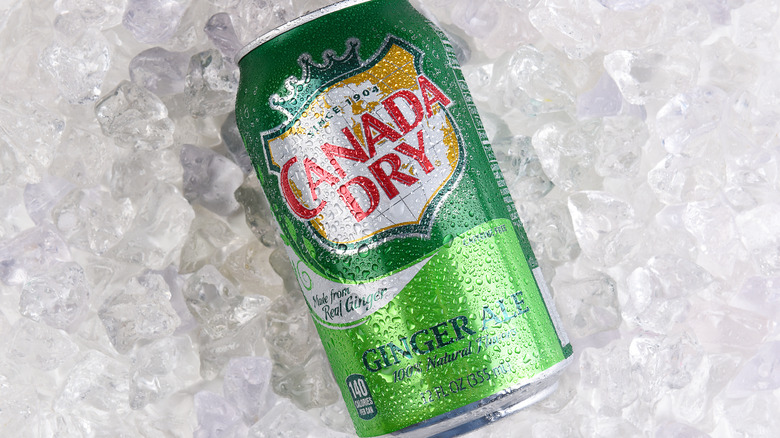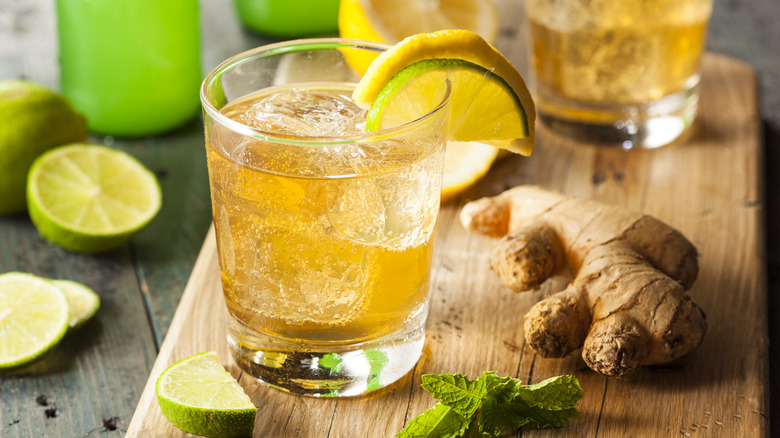Champagne May Have Inspired The Birth Of Canada Dry Ginger Ale
Bubbles are effervescent, tantalizing, and enjoyable for most people. You'll find them in all kinds of drinks because of their unique and pleasurable sensation of them rolling and bursting along your tongue. The most classic and highly sought-after bubbly drink is Champagne, with its beautiful golden hue and alcoholic spritz. Champagne might be one of the oldest drinks infused with bubbles, but it wasn't always that way. According to National Geographic, Champagne was a still wine made in the Champagne region of France. It wasn't until the 17th century the true origin of Champagne, monk Dom Pierre Pérignon made this sparkling discovery, describing the experience of drinking the wine as akin to sipping on stars!
A romantic and poetic notion, to be sure; that was the moment humanity began its near-obsession with bubbly drinks. Today, we seem to have carbonated everything; we have sparkling water, mineral water, club soda, tonic water, beer, and so on. We will carbonate almost anything just to emanate that fizzy, short-lived buzz gliding along our tongue. One sparkling drink, in particular, took direct inspiration from the original bubbly: Canada Dry Ginger ale.
Non-alcoholic alternative
What is ginger ale, exactly? Britannic describes the drink as a beverage flavored with ginger rhizome and sugar. The drink was originally carbonated using a method of fermentation, much like champagne, though many brands today use artificial carbonation. Ginger ale is meant to taste warm, sweet, and spiced, but there are two different kinds of ale, one being made in a golden style and another in a dry style. Just Fun Facts says the golden style was made by Thomas Joseph Cantrell in Belfast, Northern Ireland, during the 1850s, but the dry style, aka the pale style, was created by John J. McLaughlin, the creator of the popular Canada Dry Ginger Ale brand we know and love today. But this particular ginger ale has one claim to fame; it was appointed "The Champagne of Ginger Ales" by the Vice-Regal Household of the Governor General of Canada.
This was no casual comparison. According to Canada Dry, their ginger ale was purposefully marketed as "the champagne of soda" throughout the decades, especially when prohibition hit the United States during the roaring '20s, forcing people to look elsewhere for their carbonation fix. Biographi claims that McLaughlin's goal was to create a light, dry ale to set himself apart from other ginger ale producers at the time and to create a champagne alternative for sober consumers.

